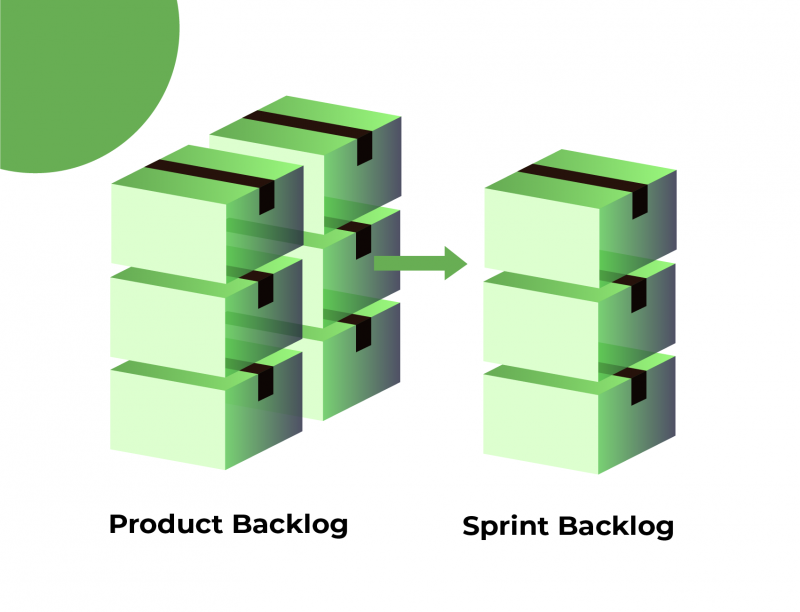If deeply immerse in the Agile ideology, you’ll find a lot of concepts, frameworks, and terms, including similar ones. Actually, it is quite easy to get things confused or jumbled up.
Especially at the start of great careers, young professionals may have difficulties in recognizing methodology attributes, feeling the difference between Scrum and Kanban, planning Sprint meetings or they just don’t know how to properly use professional product management software.
It should be difficult to implement a system if you are unfamiliar with its practices.
Sprint Meeting implicates many steps and requires strong organization, communication, effective leadership, and teamwork.
One of the most important steps in a Sprint meeting includes maintaining a backlog. In fact, Sprint Backlog and Product Backlog are also two concepts that people often confuse. Both concepts are essential for development teams to plan their next steps.
Let’s define the principal difference and get some knowledge to avoid the confusion between Sprint Backlog and Product Backlog.
Whether you prefer to work with backlogs or it’s not your favorite job – it’s better to use special tools and platforms to get jobs better done.
Contents
Distinct Differences Between the Backlogs
What is a Product Backlog?
If simple, a Product Backlog is the list of everything that must be done for a project to be completed. It involves an exhaustive set of tasks and goals that clearly shows what teams must accomplish during their Sprints to finish a product. Product managers and Product owners should care about all details that breakdown each item into steps, making all tasks easier for developers to understand. It’s also important to pay attention to time estimates to help teams determine how soon to start every project.
The Product Backlog may constantly be changing and adjusting based on the actions of the Development team. Once all steps are completed, they are removed from the Product Backlog.
What is a Sprint Backlog?
Sprint Planning meetings involve the cooperation of teams that work together to determine the steps of the Product Backlog during the Sprints. All the projects that managers add to the “to-do” list make up the Sprint Backlog.
The number of the projects in this list can vary depending on their complexity. It makes teams able to complete everything on time during the dedicated Sprints.
Sprint Backlogs may be changed only during a Sprint planning meeting and if some items are not completed during a Sprint, so they will remain in the Backlog for the next round.
How to implement Product Backlog more effectively?
The most responsible person here is a Product Owner who has the ultimate vision for the project.
The first things he/she should implement are to clearly understand every single part of the project and how to break up each step into easily completed tasks for the Development team.
The clear Product Backlog must consist of the exhaustive list of everything that must be done for the project completed. It should be written in details to clear up any confusion or questions that may arise.
The order of completion for each project must be clearly explained for everything to go according to the plan.
Product Owners need to understand the end goal of the project by determining what the customers want to see. They are responsible for creating value for their customers. This idea should be always #1 in mind when designing the Product Backlog.
How to manage Sprint Backlog more effectively?
The Sprint Backlog requires Development teams to take a good hard look at their production capabilities for them to plan Sprints effectively.
It means that every Development Team’s member together with the Scrum Master should estimate how much they can handle during each Sprint session.
The Sprints usually last 2 weeks, however, they can vary based on the team’s size and production capabilities. Product owners and product managers should care about the open discussion and effective brainstorming to develop an effective strategy for completing all of the tasks.
The Product Owner the Scrum Master should make sure that the developers know how to complete the task and what each step entails before a step is moved from the Product Backlog to the Sprint Backlog,
Thus, organization moments are the key for Development teams to stay on track and complete each Sprint Backlog during the defined timelines.
As a conclusion
Hopefully, the differences described above will help you to get a better understanding of both backlogs. The main idea here is:
The list of all required but not yet implemented features for the product constitute the Product Backlog. A subset of those features is selected at the beginning of each Sprint to become the Sprint Backlog (the set of features that the team is expected to deliver at the end of the Sprint).





